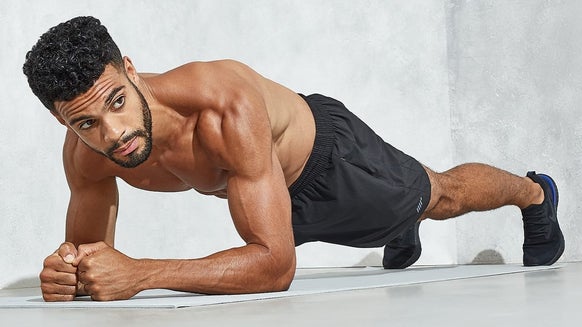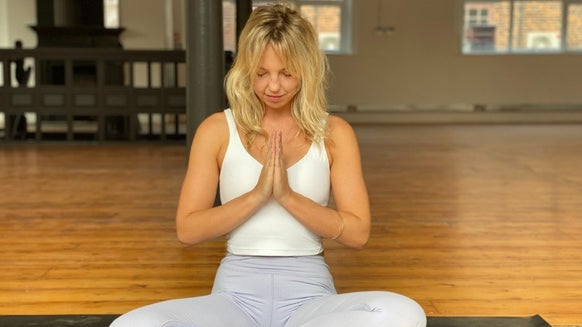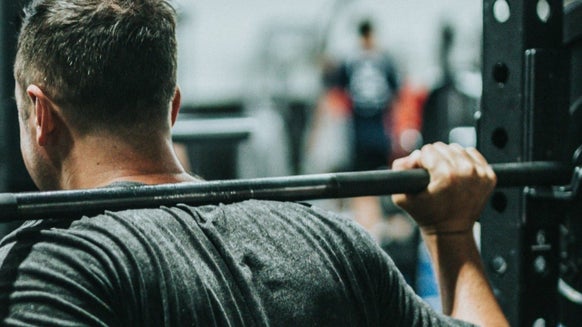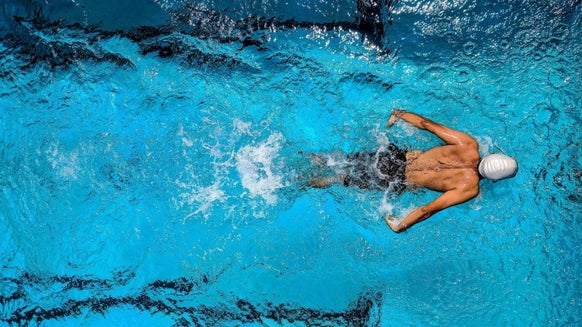What Are Cable Crunches?
Cable crunches are a highly effective and creative way to work on your abs strength and definition. Gone are the days of standard sit-ups and crunches on floor mats to tone your belly. For a decent abs workout and serious results, it is about adding a spot of diversity to your approach.
They, of course, require weighted cables, which can be found in the majority of gyms. Cable work affords you many advantages over other equipment. First of all, they allow you to add weight and therefore greater resistance to your lifts.
Adding weight with plates or dumbbells for standard crunches can be cumbersome and can also restrict your range of movement. Cables, on the other hand, allow a much more natural range of movement with the added benefit of greater resistance.
How To Do Cable Crunches?
Cable crunches come in two common forms, which you will likely spot someone in your gym performing from time to time: standing and kneeling, which we will go into in further detail shortly. There are, however, shared techniques that you ought to keep in mind for both.
The aim of cable crunches is to work your abs (that much-desired six-pack area) but mainly the upper and middle area. This is achieved by maintaining tension by ensuring your abs bear the brunt of the weight. Obviously, they will require you grip the cables unless you use a body harness. But to make sure it is your abs that take the weight you will need to focus on keeping other parts of your body still so that the tension is not spread.
While this may be a matter of preference, the cable attachment can make a difference. The most common and popular attachment is the rope, and this makes the most sense for crunches as it means you can take an end in each hand without risk of a bar across the back of your neck. A good alternative is a handle in each hand and a cable splitter.
Standing Cable Crunches
With your back to the pulley, stand straight with your feet slightly apart. Using the rope attachment, take an end in each hand and hold above your shoulder so that it does not come into contact with your neck. Opt for a light weight at first so that you can find your feet – or rather, find out what keeps you on your feet – as balance is of key importance.
Flex at the waist and bend forward. How far you bend (or crunch) depends on the range of the equipment and which are of your abs you’d like to target. For example, while a shorter range may seem an easier option, this will give that smaller exercised area a greater workout.
Don’t rest at either end of the crunch. For optimal results you should maintain as much tension as you can, so don’t let the weights touch down, and slowly and purposefully return to your starting upright position when you return to straighten.
Kneeling Cable Crunches
Kneeling cable crunches may not offer as great a range of movement, but can arguably isolate the targeted area of your abs for the better workout. Because you don’t need to concern yourself as much with balance as with standing crunches, you can lift a greater volume of weight.
To effectively perform a kneeling cable crunch you can begin by kneeling and facing towards or away from the pulley. As with standing crunches, the aim is to maintain tension and not rest at either end.
Bend at your hips and avoid extending your legs. Your knees shouldn’t come into the movement as you may be tempted to propel yourself with your legs when you begin to fatigue. Your head shouldn’t touch the floor and the weights should not touch when you come to straighten again.
Weighted Cable Crunches
As mentioned earlier, the great advantage to cable crunches is the extra resistance you can create by adding weight while retaining the same range of movement. When it comes to weighted cable crunches, you may take a second look at the number of reps you perform.
For example, if you are building your chest you would increase the weight and lower the reps for a heavier lift that works more muscle fibres. The same applies to your abs.
Standard crunches may have seen you doing them by the tens, maybe even hundreds, but with weighted cable crunches it may be time to increase the weight and lower the number of reps, or even consider a drop set: start heavy with a fixed number of reps. Take a brief pause (30secs to a minute) and then perform the same number of reps with a slightly lighter weight. Perform three sets.
High Cable Crunches
High cable crunches are about altering the angle of the pulley, which can effectively work a different part of your abs.
Further to this, if you are performing a kneeling cable crunch, if the pulley is higher, that will mean the resistance will increase and driving yourself forward will require more effort. You may want to begin experimenting with these by lowering the weight at first.
Take Home Message
At a glance, if you’re looking to develop six pack abs then you will need to look further than standard crunches. Cable crunches allow you to add extra weight and resistance that would otherwise restrict your movement and can often be more difficult with standard seated crunches.
They come in various forms, but the most common and effective are standing or kneeling cable crunches. Because they involve an element of balancing you will work the auxiliary muscle that wouldn’t ordinarily be worked with standard crunches.
Go heavy. You can treat them the same as you would when developing muscles in your arms or legs by focussing on volume, rather than reps. With slight variations in the height of the pulley and weight, you can target different areas of your abs, thus giving you a better overall spread.

Alice Pearson is a UKVRN Registered Associate Nutritionist and UK Anti‐Doping accredited advisor, having obtained a Bachelor’s of Science in Nutrition and a Master’s of Science in Sport Nutrition. She has a specialist interest in the use of sports supplements for improving health, fitness, and sport performance.
Alice has experience working with both amateur and elite athletes, including providing nutritional support to Tranmere Rovers FC and Newcastle Falcons Rugby Club. Her nutritional guidance is always supported by evidence‐based research, which she keeps up to date through continuing professional development and independent learning.
In her spare time, Alice loves travelling, hitting the gym, and getting stuck into a good book. Find out more about Alice's story here.







